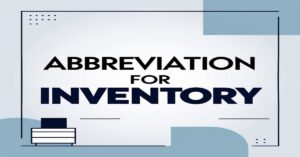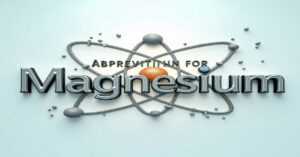In today’s fast-paced business world, effective and concise communication is crucial. One of the ways this is achieved is through the use of abbreviations, which save time and ensure clarity. One such abbreviation that holds significant importance in professional environments is Attn, which stands for Attention. Whether in business correspondence, emails, or shipping labels, the abbreviation Attn helps ensure that messages reach the right person or department.
But how does it work, when should it be used, and what is its proper pronunciation? Let’s dive into all of these questions and more in this comprehensive guide.
What is the Abbreviation for Attention?
The abbreviation Attn is a shortened form of the word Attention. This simple yet effective abbreviation directs the recipient’s focus to a specific individual or department within an organization. When you use Attn in professional writing, you ensure that the content is sent to the intended person, thereby streamlining communication and preventing confusion.
How It Works:
In business communications, you may need to address a letter, email, or package to a particular person or department. Instead of writing out the full word attention, using the abbreviation Attn makes it quicker to point out the recipient.
For example, if you’re sending an email to the Marketing Department in a company, you might write:
- Subject Line: Attn: Marketing Department – Campaign Review
Similarly, in physical mail, you may see:
- Attn: John Doe, Accounts Payable
[Company Name]
[Address]
[City, State, Zip Code]
By using Attn, the message is effectively directed to the correct recipient, ensuring no time is wasted on misdirected communications.
What Does the Abbreviation for Attention Mean?
The meaning of Attn is quite straightforward: it directs attention to the intended person or group within an organization. When used in business communication, it ensures that the communication reaches the correct recipient and highlights the importance of the message.
The use of Attn in correspondence is a formal way to say, “Please pay attention to this.” It signals that the information within the communication is intended for a particular person, often within a specific department.
Here’s a simple example:
- Attn: Sarah Williams, HR Department
This shows that the letter or email is meant for Sarah Williams, who works in the HR Department, and will be routed directly to her.
Why Abbreviate ‘Attention’?
In business communication, every second counts, and clarity is key. So why not abbreviate attention? Below are some reasons that make Attn a preferred choice in professional communication:
1. Efficiency
Using Attn saves both time and space. Rather than writing out the full word attention, professionals can quickly direct correspondence to the right person. This also simplifies documents, emails, and labels, especially when dealing with high volumes of communication.
2. Professionalism
In the world of professional writing, especially in business correspondence, abbreviations like Attn help maintain a formal tone. They make written communication feel more polished and streamlined, which is important in industries like finance, law, and corporate management.
3. Clarity
Using Attn helps avoid confusion. In a large organization with many departments or teams, it ensures that the right individual or department receives the communication without delay.
4. Consistency
In formal settings, consistency is essential. If everyone in the company or industry uses Attn to direct attention to the correct recipients, it maintains uniformity across all communications, leading to more efficient workflow management.
5. Space Efficiency in Physical Mail
In letters, labels, or envelopes, where space is limited, using Attn helps save space and makes it easier to organize mail. A full word like attention can take up valuable space that could otherwise be used for other details.
Are There Other Abbreviations for Attention?
While Attn is by far the most common abbreviation for attention, there are other variations that you may come across. Some of these are less widely used but can still serve a similar purpose depending on the context.
1. ATN
Another abbreviation that stands for attention is ATN, though it’s used much less frequently than Attn. You might find this abbreviation in technical documents or internal communications that require an even more condensed format.
2. ATT
Sometimes, people will abbreviate attention as ATT. While this can still be understood in most contexts, it’s not considered the most professional or widely recognized abbreviation in formal writing.
Although these alternatives exist, Attn remains the standard abbreviation for attention in most professional writing.
Pronunciation of ‘Attn’
One of the most common questions surrounding abbreviations is how they should be pronounced. In the case of Attn, it is important to note that it is never pronounced letter by letter like A-T-T-N. Rather, it is pronounced as the full word attention.
Phonetic Breakdown:
- Attn is pronounced as “Attention” /əˈtɛnʃən/
The “Attn” abbreviation doesn’t change the pronunciation of the word it represents. You would say the full word attention when discussing the abbreviation, even in business conversations or over the phone.
When Should You Use the Abbreviation for ‘Attn’?
Attn is commonly used in formal, professional communication when you need to direct a piece of correspondence to a specific person or department. However, it’s important to understand the appropriate context for its use. Let’s take a closer look at when Attn should be used and when it’s best avoided.
1. Business Correspondence
In business letters, emails, and memos, Attn is a widely accepted abbreviation that helps direct the communication to the right person or department. For example:
- Attn: Accounting Department – Invoice Processing
- Subject Line: Attn: John Smith – Monthly Report
2. Shipping Labels
When sending a package or important document to a specific department or person, Attn ensures that the package reaches the correct recipient. It is especially useful in large organizations where many departments are located at the same address.
3. Internal Communication
In large corporations or offices, internal memos or notices often include Attn to direct specific messages to the right team or department. This is crucial for maintaining smooth operations within an organization.
4. Formal Documents
Legal, financial, or official documents often require precision. Attn is used in such cases to direct important correspondence to the correct party.
When Not to Use ‘Attn’:
- Informal Communication: In casual emails or personal messages, there’s no need to abbreviate attention. Directly addressing the person is more appropriate.
- Social Media: Attn is typically avoided in platforms like Twitter or Instagram, where informal communication takes precedence.
Acronym for Attention vs. Abbreviation for Attention
There’s often confusion between abbreviations and acronyms, so let’s clarify the distinction in the context of Attn.
Abbreviation:
An abbreviation shortens a single word. Attn is an abbreviation because it shortens the word attention, without altering its meaning or structure.
Acronym:
An acronym is a type of abbreviation formed from the initial letters of several words. For example, FYI (For Your Information) is an acronym, as it derives from multiple words. Attn, however, is not an acronym, as it is based on a single word.
Therefore, Attn should be categorized as an abbreviation, not an acronym.
Synonyms for Attention
While Attn is the go-to abbreviation for attention, there are several synonyms you can use in different contexts to convey a similar idea. These synonyms help add variety to your writing, ensuring that your communication remains fresh and engaging.
1. Focus
Used when directing someone’s mental energy or concentration toward something.
- Example: The meeting requires your focus, not just your presence.
2. Consideration
Refers to thoughtful attention or regard, often in a more formal context.
- Example: I appreciate your consideration of this matter.
3. Awareness
Denotes the state of being conscious or mindful of something.
- Example: We need to raise awareness of this new policy.
4. Concentration
Refers to sustained attention or effort on a particular task.
- Example: The team’s concentration on the project is admirable.
5. Regard
A formal synonym that suggests respect or focus.
- Example: Please give regard to the attached document.
Antonyms for Attention
Just as there are synonyms for attention, there are also antonyms that convey the opposite meaning. These are important to know, especially when you’re looking for contrast or emphasizing a lack of focus.
1. Inattention
Lack of focus or disregard.
- Example: The project suffered due to the team’s inattention.
2. Neglect
Failure to give attention or care to something.
- Example: The neglected emails were left unread for days.
3. Indifference
A lack of interest or concern for something.
- Example: His indifference toward the issue was disappointing.
4. Distraction
A state of being diverted from the primary focus.
- Example: Distraction can severely hinder productivity.
The History of the Word Abbreviation for Attention
The word attention comes from the Latin root attendere, meaning “to stretch toward” or “to pay heed.” This evolved into the Middle French word attention, which eventually found its way into English. The usage of Attn as an abbreviation likely began in the 19th century, as a way to make business communications more efficient and direct.
Lexical Evolution:
The development of the word attention showcases how language evolves to meet the needs of society. Originally a full-length word, it was shortened over time to Attn for efficiency in business writing. This transformation reflects the increasing need for communication efficiency in the professional world.
Other Examples of Abbreviations Related to Attention
In addition to Attn, there are many other abbreviations that serve a similar purpose in business communication. Here are a few examples that will help expand your understanding of professional shorthand:
- RE (Regarding): Often used in subject lines or headings to indicate the main topic of discussion.
- FYI (For Your Information): A common abbreviation used to share information without the expectation of a response.
- RSVP (Répondez s’il vous plaît): Used in invitations to request a reply.
These abbreviations, like Attn, help streamline communication, making it quicker and more effective.
Examples of the Word and Abbreviation in Context
To give you a clearer picture
of how to use Attn, let’s explore a few examples:
Example 1: Email Communication
Subject Line: Attn: Marketing Team – Quarterly Report
Dear Marketing Team,
Please find attached the quarterly marketing report for your review. We look forward to discussing the next steps at the upcoming meeting.
Best regards,
[Your Name]
Example 2: Physical Mail
Attn: Jane Doe, HR Department
[Company Name]
[Company Address]
[City, State, Zip Code]
Example 3: Shipping Labels
Attn: Warehouse Staff
[Company Name]
[Warehouse Address]
[City, State, Zip Code]
Conclusion
In conclusion, the abbreviation Attn plays a vital role in business and professional communication. Whether you’re sending an email, a formal letter, or shipping a package, using Attn helps ensure that your message reaches the right person or department. It’s a simple, yet essential tool that enhances clarity, saves time, and boosts the overall professionalism of your communications.
By understanding when and how to use Attn, you can streamline your workflow and ensure your messages are delivered efficiently. Whether you’re managing internal communications or engaging with clients, mastering the use of this handy abbreviation will improve your business operations and professional presence.

Tony James is a passionate wordsmith and the creative force behind Winky Hive. With a knack for uncovering the stories behind slang and weaving emotions into poetry, Tony brings a unique voice to every piece he writes. A lifelong lover of language, he thrives on exploring how words evolve, connect, and inspire.
When he’s not penning articles or crafting verses, Tony enjoys diving into cultural trends, reading classic poetry, and discovering hidden gems in modern expressions. His mission? To make Winky Hive a haven for those who love the art of language in all its vibrant forms.









